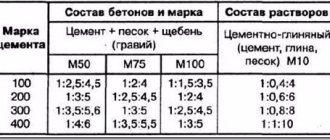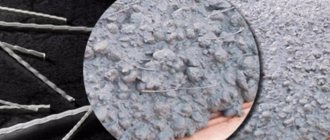The structure of the roadway is more complex than it seems at first glance. To ensure high quality roads, the road construction process uses many materials and various technologies aimed at improving the performance of the structure. One of the irreplaceable materials in the construction of highways is geogrid.
Purpose of geogrids
– creation of a reinforcing effect, followed by the distribution of vertical load, which has a positive effect on the condition, operational characteristics and service life of the road. What is a geogrid?
“Geogrid is a geosynthetic material that has a flat mesh structure, which is formed by weaving and fastening high-strength synthetic threads according to a certain pattern. To enhance properties and improve stability, the mesh can be impregnated with a special solution.”
This material is characterized by high strength and wear resistance, a solid frame, long service life, and immunity to external factors. At the same time, geogrid does not lose its properties for a long time, does not decompose, and is also safe for the environment.
What properties does a geogrid have?
The geogrid has two most important properties that determine the presence of all other features: reinforcement and redistribution of vertical loads. In other words, geogrid makes the road structure stronger and also prevents vertical loads from affecting the structure of the structure.
Basic properties of geogrid:
- 1. Increases the strength of the structure;
- 2. Evenly distributes vertical pressure;
- 3. Prevents deformation of the coating;
- 4. Keeps the canvas from sliding;
- 5. Reduces the likelihood of cracks and holes;
- 6. Separates technological layers;
- 7. Keeps the crushed stone base at the same level;
- 8. Shows resistance to uneven shrinkage;
- 9. Can support both dynamic and static loads;
- 10. Increases the service life of the coating;
- 11. Performs a drainage function;
If the geogrid is not laid between layers of sand and crushed stone, then the fabric cannot be considered to meet modern quality standards. Passing traffic will exert local pressure on the upper layers of asphalt concrete, which will press the crushed stone underneath into the sand.
This will quickly lead to serious deformation, the appearance of potholes, cracks, and disruption of the strength of the entire road surface: from the top layer of asphalt to the bottom of the base. Due to this effect, voids will form in the inner layers, which can lead to failures of the coating.
In addition to extending the life of the road surface, geogrid also reduces road construction and maintenance costs.
When using a geogrid, the following is observed:
- 1. Reducing crushed stone consumption by 40%;
- 2. Reducing employee labor costs;
- 3. Acceleration of the asphalt paving process;
- 4. Reduced repair frequency;
- 5. Saving financial resources and resources;
According to statistics, when using reinforcing mesh on category III roads, the annual savings amount to 200,000 rubles per kilometer of road. This clearly demonstrates how effectively geogrid improves the performance and lifespan of asphalt pavement. Therefore, ordering asphalt paving using geogrid will be more profitable than not using this material.
In road construction, geogrid is laid not only between crushed stone and sand, but also between layers of asphalt concrete. This is relevant both during road construction and asphalt repair. When installed in asphalt concrete, bitumen emulsions are applied to ensure good fixation.
TECHNOLOGY OF WORK FOR REINFORCING ASPHALT CONCRETE COVERING
LECTURE 9
TECHNOLOGY OF WORK PRODUCTION
WHEN REINFORCING ASPHALT CONCRETE COVERING
“Methodological recommendations for the use of geogrids and flat geogrids for the reinforcement of asphalt concrete layers of improved types of coatings during major repairs and repairs of highways” ODM 218.5.001-2009
a) Before the installation of reinforced asphalt concrete pavement begins, off-site and on-site preparatory work must be carried out.
aI) Off-site work includes a set of organizational and technical measures, the composition of which depends on specific conditions that ensure high quality coating construction at the required pace of work.
The most important of these activities are:
— organization of operational incoming quality and volume control of materials (including geosynthetic materials);
— preparing the mixture recipe and debugging the operating modes of the asphalt concrete plant and asphalt paver;
— determination of the required quantity and preparation of vehicles for transportation of the mixture and geosynthetic material;
— preparation of access transport routes;
— determination of the required quantity and preparation of machines, mechanisms, tools and equipment (including for the distribution and fixation of geosynthetic material according to clause 3III) of this section for effective work on the road;
— training of engineering and technical personnel and workers regarding the specifics of performing operations for constructing reinforced pavement.
aII) On-site preparatory work is carried out directly on the road and is included in the list of production operations that ensure the quality of the resulting coating. Special types of on-site preparatory work typical for the installation of reinforced asphalt concrete pavement are the following:
— ensuring organized passage of transit transport;
— setting up all dosing systems of the asphalt distributor and clarifying the norm for filling the binder, ensuring high-quality fixation of the geosynthetic material based on (see paragraph h) of this section);
— checking the operation of a specialized machine for distributing geosynthetic material (if available);
— checking the operation of a special stapler or construction-installation gun, selecting dowels and cartridges used to fix geosynthetic material on the base (if necessary, see paragraph h) of this section);
— test distribution and compaction of the asphalt concrete mixture with a set of rollers to check the absence of shifts of the geosynthetic material under the influence of dump truck wheels, tracks (wheels) of an asphalt paver and the absence of significant damage to the reinforcing material after exposure to compacting agents (see clause 4, table 2 and clause 3) of this section ).
b) Work on the installation of coating layers using reinforcing layers is carried out in accordance with the recommendations of SNiP 3.06.03-85, SNiP 12-03-2001, VSN 8-89, Methodological recommendations for the repair and maintenance of highways, VSN 37-84 according to standard technological schemes with some modifications and the addition of individual operations. Such operations that are modified or added in connection with the installation of a geosynthetic reinforcement layer usually include the following:
— preparation of the base (existing coating);
- filling of binder;
— preparation of reinforcing material (if necessary);
— laying and gluing (fixing) the reinforcing layer;
— re-filling of the binder (if necessary);
— distribution of stone fines (if necessary).
c) The composition of the technological operations and the volume of work to prepare the base (existing pavement) before laying the road surface depend on the transport and operational state of the existing pavement and the types of work provided for in the design documentation for major repairs or repairs of a section of the highway (clause aI) of section 6) .
cI) In the case of installing reinforced pavement on existing road pavement, if its strength does not correspond to transport loads, preparation of the base can include a wide range of technological operations - from installing additional base layers to regulating the water-thermal regime of the roadbed.
Measures to increase the load-bearing capacity of road pavements are selected as a result of a technical and economic comparison of options. This may include milling the existing coating and base, or installing additional layers. In this case, caution should be exercised against constructing a reinforcement layer made of discrete materials. Materials not treated with a binder can be laid in the lower part of the reinforcement layers only if there are layers of permeable material (gravel, crushed stone) underneath them. Otherwise, moisture accumulation may occur in these layers caught between waterproof materials, which will accelerate their destruction during freezing and loss of strength during the design period. The exception is for road sections located in places where there is no seasonal freezing of road surfaces.
cII) In the case of restoration and strengthening of a worn-out asphalt concrete pavement with the elimination of rutting while ensuring the strength of the existing road pavement, preparation of the base necessarily includes technological operations related to the elimination of rutting.
A specific method and technology for combating rutting is selected in each case based on an analysis of the results of a survey of the general condition of the road, identifying the causes of rut formation, their depth, geometric parameters and length, traffic intensity and composition, taking into account financial and logistical capabilities, and the timing of the work. and other factors (Recommendations for identifying and eliminating ruts on flexible road surfaces).
cIII) In the case of covering worn-out pavements made of cement concrete or reinforced concrete slabs with reinforced asphalt concrete, preparation of the base may include a varied set of technological operations, depending on the types of deformations and destruction of the existing cement concrete pavement (Guidelines for the repair of cement concrete pavements of highways) (defragmentation of slabs, leveling of the surface and ledges , replacement of damaged sections of slabs, repair of chipped edges and corners of slabs, expansion joints, sealing of joints, preservation of cracks, etc.).
During the inspection, special attention must be paid to identifying rocking slabs and slabs under which there are voids. The position of these slabs must be stabilized by ensuring tight contact of the slabs with the base using any of the available methods. This helps prevent premature destruction of the top layer of the reinforced coating.
It is necessary to check the type of material used to seal seams and cavities in the area of the mounting hinges of the slabs. If bitumen is used for these purposes, it must be replaced with special mastic. Otherwise, when laying hot asphalt concrete over the slabs, the bitumen will heat up, go into a fluid state and protrude over the laid layer, deteriorating the quality of the mixture and coating (Figure 1).
cIV) In the case of using reinforced asphalt concrete when widening the existing road surface to the standards of the corresponding categories of the section of the road being repaired, or when restoring the road surface in places where the roadbed is being repaired, the range of work to prepare the base begins with the construction or repair of the roadbed and ends with cleaning and priming the surface of the new load-bearing base.
cV) In the simplest case, preparation of the base includes cleaning it from dust and dirt, eliminating potholes and other minor defects, cleaning and sealing cracks with an opening width of more than 5 mm with sealing material. If the evenness of the base does not meet the required values, its surface is leveled by milling or installing a leveling layer.
d) The organization of a set of works to prepare the foundation should ensure the required pace of work on the installation of a reinforced coating. Therefore, depending on the types and volumes of preparatory work, they can be carried out by a separate specialized detachment (team) with an organizational gap between the coating device. At the same time, the length of replaceable grips for preparing the base and laying out the coating can be different, depending on the pace of the leading operations (operational productivity of the leading machines).
With relatively small volumes of preparatory work (clause vV of this section), they are carried out in parallel with the construction of the reinforced coating.
e) The installation of reinforced asphalt concrete pavement is carried out only after acceptance of the base (existing pavement) by representatives of the technical supervision of the governing body with the execution of the relevant documents. Acceptance of the base is carried out in accordance with SNiP 3.06.03-85.
f) All types of work on the installation of reinforced pavement must be carried out on one replaceable grip, the length of which is determined by the operational productivity and the number of driving machines. Usually the driving machine is an asphalt paver, less often – rollers and dump trucks. The shifting pace of work can also determine the productivity of the asphalt plant.
g) The first type of work performed on the grab is cleaning the base. The base should be thoroughly cleaned of dust using a watering machine or sweeper. If there is a curb stone, special attention during cleaning should be given to the roadway tray in the area where the base meets the stone. It is advisable to clean this area with a sweeper and vacuum cleaner or manually.
h) Immediately after cleaning the base, the binder is poured (priming), the choice of which, the consumption and the order of pouring are made depending on the conditions of the work, the type of geosynthetic material used, the properties of the lower layer on which the reinforcing layer is laid.
Subpriming is carried out in any case (even if the laying of the lower and upper layers of asphalt concrete pavement is carried out in parallel with a gap of 1-2 shifts). This operation must be performed very carefully, and is necessary for two reasons:
— to ensure adhesion of the geogrid to the lower and upper layers of the coating, layers to each other, for further collaboration;
- for technological reasons, for fixing (“gluing”) the geogrid to the bottom layer for the period of movement of dump trucks and an asphalt paver laying the top layer of coating along it.
Both the first and second reasons are very important. The quality of “gluing” of the mesh is determined by the absence of shifts and waves of the reinforcing material when laying the top layer of the coating, and this, in turn, determines the effectiveness of the reinforcement.
hI) Viscous bitumen of the BND 40/60, BND 60/90 or BND 90/130 brands (according to GOST 22245-90*) can be used as a binder. At lower temperatures during work, less viscous bitumen is used. When distributed, it has a temperature of at least 120-150 oC.
In case of poor spreading of viscous bitumen with the formation of bitumen tracks, in cool weather, when viscous bitumen quickly cools and does not fix the geogrid well, viscous bitumen diluted with 8-12% kerosene is used for priming. The breaker can negatively affect the strength of the geosynthetic material. Therefore, in a specific case, it is necessary to check the possibility of using this type of thinner to reduce the viscosity of bitumen in contact with a specific type of geosynthetic material.
When using liquefied bitumen, it is better to lay the geogrid before the liquefier evaporates, and the asphalt concrete mixture after evaporation.
At low air temperatures, the need to lay the coating on a damp base, and the use of geocomposites with geotextile material not treated with binder, it is preferable to use quickly disintegrating bitumen or polymer-bitumen emulsions (classes EBK-1, EBPC-1, EBK-2, etc.). In cool times (below plus 15 °C), the emulsion is heated to 50-60 °C. The filling time is determined by the period of disintegration of the emulsion.
A positive feature of the use of bitumen emulsions is a more uniform distribution of the binder and the ability to correct flaws that may be made when laying geosynthetic material before the emulsion disintegrates. At the same time, the need to wait for the emulsion to disintegrate delays the start of technological operations for distributing and compacting the asphalt concrete mixture.
hII) Particular attention should be paid to the uniformity of pouring and the rate of consumption of the binder. An insufficient amount of binder in general or in individual zones can lead to a weakening of the fixation of the GM on the bottom layer, which will lead to shifts in the geogrid when laying asphalt concrete.
General view of the geogrid laid on the base, Figure 2.
An excessive amount of binder complicates the work technology and can lead to the sticking of the cement to the wheels and damage to the reinforcing material when dump trucks drive onto it.
The binder consumption rate is prescribed depending on the condition of the base (existing or newly laid layer), the type and properties of the GM used and the binder itself, as well as taking into account the recommendations of the geogrid manufacturer. An increased rate of filling of binder (bitumen 0.9-1.2 l/m2, emulsion 1.1-1.5 l/m2) is carried out:
— when laying reinforcing material on an existing coating with a significant number of small defects that were not eliminated at the previous stage of work (small cracks, etc.);
- with significant roughness of the existing coating;
— when using geogrid or geocomposite that was not treated with binder during their manufacturing process.
Figure 2 – Example of laying geogrid on the base
In other cases, the binder filling rate is usually 0.7-1.0 l/m2. In places where increased shear forces from vehicles may occur (steep slopes, braking areas), the binder consumption rate should be reduced, but not less than 0.7 l/m2.
Considering the difficulty of accurately setting the binder consumption rate, it is advisable to adjust it based on indirect external signs depending on the intensity of the color of the mark remaining on the surface of the vehicle after it has been laid and the vehicle has passed. When the consumption rate is set correctly, the track has an intense black color; if there is an excess of bitumen, reflections appear on it, and sticking of the canvas on the wheels is noted; if there is a deficiency, the track becomes weakly visible or acquires a brown tint.
Bitumen (emulsion) is poured using an asphalt distributor with well-adjusted and cleaned nozzles in one or two steps (before and after laying the geogrid). More often, priming and laying of one strip of coating are performed. The filling width should be 10-15 cm larger than the width of this strip. When laying the covering over the entire width, the base is completely primed.
The number of binder pours depends on the type and geometric parameters of the geogrid or geocomposite used.
The general principle for assigning the number of binder pours during priming is as follows: if the area occupied by the gaps between the ribs of the geogrid (open cell area) is more than 70-75%, and the area occupied by transverse and longitudinal ribs is less than 25-30% of the total area of the geogrid fabric, then pouring the binder can be done in one step. Otherwise, it is recommended to fill in two steps: the first - 70%, the second - 30% of the full filling rate before and after laying out the reinforcing material. When using a geogrid or geocomposite that has not been treated with a binder during its manufacturing process, it is recommended to fill the binder in two stages.
If you deviate from the recommended rules and always pour the binder in one step, the main part of the area of the adhesive material can be covered by geogrid ribs or non-woven geotextiles, which significantly weakens the connection between the layers of asphalt concrete and does not allow the benefits of the reinforced coating to be fully realized.
hIII) Before laying, packaged geogrid rolls are stored on the side of the road in such a way as to prevent manual movement of the rolls over a significant distance, i.e. taking into account the length of the mesh in the roll. If necessary, geogrid rolls can be cut to the required width before installation using a joint cutter or other power tool.
Laying of the reinforcing layer is carried out immediately after pouring the binder. The geogrid is laid in the longitudinal direction evenly, without distortions, by a team of workers of three to four people (Figure 3).
Figure 3 – Laying geogrid manually
The roll is laid on a sub-ground base, precisely oriented along the edge of the base and the mesh is unwound for 10-15 m, checking the correct direction of laying.
At a significant pace of work (more than 3000 m2/cm), the number of the team is increased, or a special attachment mechanism is used (Figure 4).
The number of rolls rolled out at the same time depends on their width and the width of the base. For example, with a base width of 8 m and a roll width of 4 m, the mesh is laid with a distance of 7-8 cm from the edges to ensure that the geogrid strips overlap in the middle of the coating by 14-16 cm. If it is necessary to simultaneously roll out 2-3 rolls, work is carried out ahead of the outermost ( external) roll, which acts as a template and guide for other, neighboring rolls. The recommended overlap width for longitudinal joints of rolls is 10-15 cm, for transverse joints of rolls – 20-25 cm (when using a geocomposite, overlapping adjacent strips may not be required).
When laying rolled reinforced concrete on curves of small radius, it is necessary to cut the reinforcing material across the strips one or several times (Figure 5 A). The length of each strip L depends on the radius of the curve R and the permissible distance between the edge of the geogrid and the coating (usually up to 0.3 m). With a known value of R, the length of the strip can be approximately determined by the formula
.
Figure 4 – Attachment mechanisms for laying out reinforcing materials
When laying GM strips over sinuous cracks, the recommended width of the strip is 1.5 m; the actual width is determined by the outlines and tortuosity of the cracks (Figure 5 B). In this case, they are based on the requirements for a minimum length of “sealing” of the geogrid equal to 70 cm on each side of the crack, and a minimum overlap of strips equal to 25 cm. Solid strips along the entire length are more effective, but if the cracks are tortuosity, the strips can be cut and laid with overlap.
With combined reinforcement with a solid sheet and strips, the latter must be laid and glued to the base under the solid sheet of GM (Figure 5 B).
The beginning and end of each subsequent roll of GM laid along the width of the coating must be shifted in the longitudinal direction by 2-3 m (see Figure 5 A and B).
When using a geocomposite to reinforce a coating, additional fixation of the geocomposite to the base, as a rule, is not required.
hIV) The length of the section on which the reinforcing material is laid depends on the conditions of the work. In this case, we proceed from the following requirements: do not allow transit transport to move along the GM; do not allow dump trucks delivering the mixture to turn around in the area where the GM is laid; carry out slow, uniform movement of loaded dump trucks towards the asphalt paver in reverse along one track.
Figure 5 – Schemes for laying and fastening geogrid sheets and strips on the base: A – when reinforced with a solid sheet on small radius curves; B – when reinforced with strips over cracks; B – with combined reinforcement with strips and solid fabric; 1 – longitudinal and transverse cracks; 2 – geogrid strips; 3 – additional fixation of strips to the base; 4 – geogrid sheets laid on top of the strips
If, after driving several dump trucks, sticking of the asphalt to the wheels is observed, then you should adjust the rate of pouring the binder or manually add asphalt concrete mixture to the track from the asphalt paver hopper.
hV) A significant decrease in the quality of a reinforced asphalt concrete pavement can occur as a result of granulometric and temperature segregation (heterogeneity) of the asphalt concrete mixture.
Due to granulometric segregation, in certain areas of the laid layer of asphalt concrete mixture there is an excessive amount of large fractions of stone material, which can lead to damage to the reinforcing material in these areas during compaction of the layer and a decrease in the effectiveness of the reinforcement.
To reduce the granulometric segregation of the mixture, the body should be loaded in a certain sequence (Figure 6).
Figure 6 – Options for loading the body: A – in one go,
leading to strong segregation of the mixture; B – recommended, in three steps
To transport the asphalt concrete mixture from the asphalt concrete plant to the asphalt paver, heavy-duty dump trucks with:
— the design of a body heated by exhaust gases and an awning to cover the transported mixture;
— a lifting device that provides a gradual increase in the angle of inclination of the body with fixation of its position in several places;
— high speed and suspension design that would create minimal vibration when driving.
It should be noted that unloading the asphalt concrete mixture directly from the body of a heavy-duty dump truck leads to settlement of the asphalt paver, which may result in a decrease in the thickness of the layer being laid. As the mixture is developed and the load on the mechanism decreases, the thickness of the layer may increase. An increase in the thickness of the coating layer by only 2-3 cm requires an increase in the contact pressure of the roller by 20-30%, which is difficult to implement in practice. Ultimately, the evenness of the laying strip is disrupted and, as a result, the quality of compaction and the effectiveness of coating reinforcement decreases.
The temperature segregation of the mixture immediately after its distribution by the paver over the covering area can reach 30-40 degrees. Such significant temperature heterogeneity predetermines significant heterogeneity in the strength, deformability and compactability of the mixture.
To ensure a uniform, continuous supply of the mixture to the paver without direct contact with it, and to eliminate the granulometric and temperature heterogeneity of the mixture, a conveyor loader should be used. The use of this machine in the technological process significantly reduces the likelihood of slipping of the tracks (wheels) of the asphalt paver, shifting and damage to the reinforcing material.
hVI) The total cooling time of different layers of the mixture from 160-140°C to 65-60°C under certain weather conditions ranges from 25 to 100 minutes. Within this time, it is necessary to complete the entire scope of compaction work. During the compaction period, the shear strength of the mixture increases approximately 4 times, and the deformation modulus increases by 15 times. Therefore, it is possible to select the rational composition of a link only experimentally, during the process of trial compaction, focusing on existing recommendations.
The final decision on choosing a compaction mode that does not damage the geogrid can be made in each specific case only during the process of trial laying and compacting the layer. To do this, samples in the form of strips of geogrid (at least 5 samples) must be removed (cut) from the coating, immediately after test compaction, before the layer cools and transferred to the laboratory for testing.
In general, in the process of compacting the layer, rollers must move along the rolled strip from its edges to the axis of the road, and then from the axis to the edges, overlapping each track by 20-30 cm. When constructing conjugate strips, the rollers of the roller when compacting the first strip should be away from the mating edges are at a distance of at least 10 cm. When compacting the second strip, the first passes must be made along the longitudinal mating with the previously laid strip. When hitting a freshly laid strip, the rollers must move forward with the drive rollers, which eliminates the formation of a wave in front of the roller.
If testing determines that the degree of damage to the geogrid ribs exceeds the permissible limit (see Table 1), the compaction mode or reinforcing material should be changed.
The damage to geocomposites during compaction of the asphalt concrete layer is significantly less than that of geogrids without non-woven geotextile fabric.
Where is geogrid used?
The main area of application of this geosynthetic is the construction of highways and their repair. It doesn’t matter whether asphalting is being done in Mytishchi or a new expressway is being built, geogrid will be used in any case. However, in addition to this, geogrid is used in several other areas where it performs the same function - reinforcement.
Where is geogrid used:
- Construction of highways;
- Repair of road surfaces;
- Construction of railways;
- Strengthening slopes and banks;
- Hydraulic engineering;
- Complex strengthening of soil and embankments;
- Improvement of suburban areas;
- in some other engineering structures.
Types of geogrids for road construction
There are several types of geogrids:
- Volumetric. Well suited for strengthening weak soils. All elements are connected in a staggered manner, which forms a strong frame in two planes. Their strength can reach up to 70% of the original strength of synthetic tapes.
- Flat. Presented in the form of a cellular material rolled into a roll. They strengthen roads, driveways, garden paths, including slopes and embankments.
Reference. Volumetric geogrid is considered durable. Its service life reaches 50 years or more. Able to withstand heavy loads and temperature fluctuations.
Classification of geogrids
| Parameter | Peculiarities |
| Purpose |
|
| Cell orientation |
|
| Mounting method | The fibers are laid perpendicularly to create a mesh structure. Then they are attached to each other in one of the following ways:
Perforating a single piece is not used today. |
| Varieties by material |
|
How is the material classified?
Depending on the purpose, fiberglass products are divided into two groups:
- For the ground. Allows you to reduce the consumption of granular raw materials by 40 percent.
- For asphalt concrete. Reinforcement of the asphalt concrete pavement occurs due to the formed links, which act as an anchor.
Based on the formed structure, the product is made into two types:
- A uniaxial geogrid has elongated long cells. The high tensile strength allows the product to be used for separating layers and for reinforcement. Application: when constructing embankments on soft soils, mounting bridge abutments, steep slopes.
- A biaxial mesh with rectangular cells is used for road construction work on soft soils. The use increases the endurance of the structure to dynamic and static loads. Application: during repair or construction, for road reinforcement.
By type of raw material used to produce the product (labeling is provided):
- G, FG – fiberglass;
- PET – polyester;
- PA – polyamide;
- PP – polypropylene;
- PE – polyethylene;
- B – basalt.
The raw materials from which the geogrid is made react differently to excess moisture. For example, a product made of polyamide material does not absorb water, but is destroyed and loses strength by 25-35 percent.
What is geogrid made from?
It is worth dwelling in more detail on the material of manufacture, since this parameter affects the presence or absence of certain characteristics of the geogrid. All of the varieties listed below are suitable for both simple soil reinforcement and the construction of roads and similar objects.
That is, in fact, these geogrids are universal options, but they have some differences. Moreover, all the described types of grids have:
- High strength;
- Long service life;
- High tensile strength;
- Resistance to heat and cold;
- Resistance to temperature changes;
- Good wear resistance;
Fiberglass Geogrid
. As the name implies, this mesh is made of fiberglass. It is characterized by high strength and low elasticity - static elongation is about 4%.
Due to this, it is well suited for use in road construction, as it prevents subsidence of the canvas and weakening of the base, and also reduces the likelihood of cracking of the coating. Can be used in the upper layers of asphalt concrete.
Basalt geogrid
. It is made of basalt rovings laid on top of each other. To enhance the properties, bitumen impregnation is used. It has high strength and good adhesion. Does not conduct electricity and is an environmentally friendly material.
Well suited for road construction due to its durability and resistance to the environment. It also stands out for its relatively low cost.
Polypropylene geogrid
. The starting material polypropylene provides high strength and demonstrates the ability to easily withstand mechanical stress. It is also highly waterproof.
It is used in road construction, effectively absorbing dynamic impacts on the road surface, thereby reducing the likelihood of cracks.
Polyester Geogrid
. This mesh is made from polyester threads, which explains the relatively low price. To enhance its properties, the mesh is impregnated with a bitumen solution.
It is in demand in road construction, as it meets all requirements while having an acceptable cost. It has a long service life and is environmentally friendly, and is not susceptible to external factors.
Polymer geogrid
. Made from polymer materials using extrusion, also known as LED mesh.
It is used in road construction, as it has fairly high physical and mechanical characteristics and can easily withstand various mechanical impacts. The only drawback is exposure to ultraviolet rays.
Composite mesh
stands out because it consists of several layers of geogrid. It can be, for example, glass or basalt. In theory, it can consist of any materials.
Description of material
The geogrid is made of polymer raw materials in the form of a roll with a mesh structure. The nodes of the resulting ribs are fastened using the following method:
- gluing;
- weaving;
- knitting;
- using stitching thread;
- fusion.
The resulting cells are capable of holding material poured into them. Soil or special bulk raw materials are used as filler. The main component is synthetic fiber impregnated with a polymer composition. The performance indicators of the geogrid are:
- strength;
- durability;
- resistance to freezing/defrosting cycles;
- tensile strength value.
Poor quality and unprepared base for road surfaces leads to rapid wear.
The geosynthetic product is characterized by technical and operational characteristics:
| No. | Index | Unit |
| 1 | Cell size | millimeters |
| 2 | Material from which the mesh is made | |
| 3 | Type of impregnation | bitumen or polymer |
| 4 | Surface density | g/m2 |
| 5 | Elongation at break longitudinal/transverse | Percent |
| 6 | Ultimate longitudinal strength | kN/m |
| 7 | Ultimate lateral strength | kN/m |
| 8 | High temperature resistance | degree C |
Laying geogrid on asphalt concrete
If geogrid is not installed properly between layers of asphalt, it will negatively affect the quality of the road surface and may cause unevenness. Therefore, to ensure maximum benefit from reinforcing the top layers of asphalt with geogrid, it is important to follow some rules and follow the algorithm.
Technology for installing geogrid between asphalt layers:
- 1. Preparing the base. It is necessary to level and clean the laying area so that the mesh is light without distortions.
- 2. The bottom layer of asphalt must be treated with bitumen emulsions to ensure good adhesion and fixation of the mesh.
- 3. Geogrid is laid by rolling out a roll. Rolling is carried out with a special device similar to a traverse.
- 4. Laying asphalt over the mesh should be done carefully and without haste. In this case, it is necessary to control the immobility of the reinforcing mesh in order to avoid the formation of waves and irregularities. It is also important not to accidentally damage the mesh so as not to disrupt its geometry.
Content:
- A little about technology
- Requirements for materials used in reinforcing road surfaces
- Selection of coating for asphalt reinforcement 3.1. Road reinforcement Hatelit
- Asphalt reinforcement technology
- Repair of asphalt concrete roads using reinforced mesh
Today, special attention is paid to the issue of reinforcement of road surfaces.
Most Russian roads are covered with asphalt concrete, which collapses quite quickly. To increase the strength of new canvases and extend the service life of old ones (still suitable for repair work), construction companies use various fixing materials. Thus, increasingly, specialists are using meshes made of polyester, fiberglass, basalt fibers and other materials.
What is the best way to lay mesh on asphalt?
At the third stage, there are several options for how the geogrid can be laid:
- 1. Partial installation for local repairs. For example, over cracks or potholes.
- 2. 100% laying along the width and length of the coating.
- 3. Combined installation, which involves a continuous covering with the addition of small pieces of material in problem areas, as well as at the joints.
The choice of a specific method is made at the discretion of specialists at the work site.
Advantages and disadvantages of using geogrid
Main advantages:
- Affordable price.
- Wide range of applications.
- Convenient transportation.
- Has high strength.
- Good performance characteristics.
- Reduces the loss of backfilled soil.
- Reduces the thickness of the road surface (up to 20%).
- Increases the maximum possible transport load.
- Easy and high-quality installation in any weather conditions.
- Reduces construction time.
- There are no shrinkage processes.
- Increasing the service life of the road surface by more than 6 years.
If the geogrid is made of low-quality material or was stored improperly, then it is prone to various external factors, as well as deformation, which can significantly reduce the service life of the road base and coating.
Difficulty of installation and safety precautions
When rolling out the mesh, you should observe some safety precautions related to the fact that it is being rolled out onto hot bitumen or bitumen emulsion.
Workers must use special shoes and gloves.
Also, when using an electric tool with which to fasten the dowels, you should take into account the weather factor; if it rains, it is not recommended to carry out the work due to the risk of electric shock.
An alternative to working in wet weather can be mechanical methods of fastening dowels, using a simple hammer or sledgehammer.
Safety requirements
- Work on laying geogrids, geotextiles and other reinforcing geosynthetic materials must be carried out at least 20 meters from the place where the asphalt concrete mixture is being laid.
- Hand protection must be used when working.
- Geosynthetics themselves are not flammable, but certain types of binders in them can be flammable. This should be taken into account, and if a fire occurs, extinguish the fire with foam or water.
A description of the material, technical characteristics and areas of application of geogrids are presented in the corresponding section of the website - geogrids.
THE MOST POPULAR GEOGRIDS THIS MONTH!
| Name | Purpose |
| Polyester Road Geogrid | for asphalt concrete reinforcement |
| Polyester Road Geogrid | for asphalt concrete with backing 30*30 |
| HaTelit Polyester Geogrid | for asphalt concrete with backing 50*50/40 |
| HaTelit XP Polyester Geogrid | for asphalt concrete |
| Basalt mesh for asphalt concrete | for asphalt concrete with backing |











